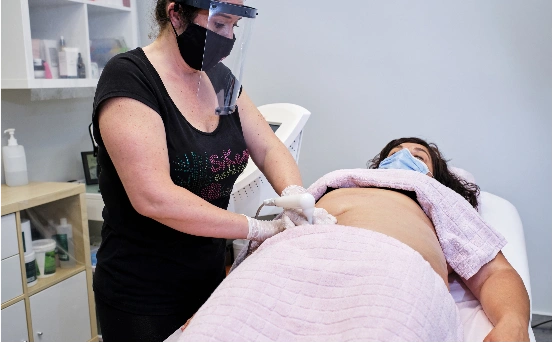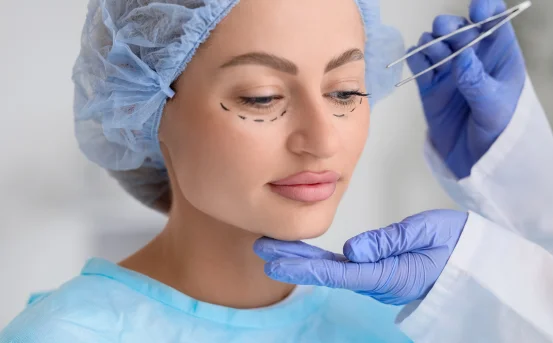Treatment for cystodiathermy surgery is a minimally invasive surgical procedure used primarily for the treatment of ovarian cysts, especially in women with polycystic ovary syndrome (PCOS). It involves the controlled application of electrical current (diathermy) to puncture and destroy small cysts in the ovaries. This targeted destruction helps restore regular ovulation, improve hormonal balance, and increase fertility in women suffering from PCOS-related anovulation.
Cystodiathermy is a minimally invasive procedure that uses controlled heat (diathermy) or laser energy to puncture the ovaries and destroy the tiny cysts responsible for disrupting hormonal balance. By reducing the excess production of male hormones (androgens), this technique can help restart ovulation naturally, often leading to improved chances of conception.
What Is Cystodiathermy?
Cystodiathermy, also referred to as ovarian drilling, is a laparoscopic procedure that uses heat (diathermy) or laser energy to destroy the thick outer layer of the ovary and shrink small cysts. It is most commonly recommended for :-
-
Women with PCOS who do not respond to fertility medications like Clomiphene Citrate
-
Individuals with hormonal imbalance leading to irregular or absent periods
-
Women who have difficulty ovulating despite lifestyle and medicinal interventions
This surgical intervention helps reduce the production of male hormones (androgens), restore ovulation, and significantly improve chances of natural conception.
Indications for Cystodiathermy Surgery
Cystodiathermy is not the first line of treatment for PCOS. However, it becomes necessary in the following cases :-
-
Resistance to ovulation-inducing drugs
-
Long-standing infertility due to PCOS
-
High androgen levels resulting in severe acne, hirsutism, or hair thinning
-
Menstrual irregularities unresponsive to lifestyle or medicinal therapies
It may also be suggested when there are multiple cysts visible on ultrasound with no follicular development over several cycles.
Treatment for cystodiathermy surgery performed
Cystodiathermy is typically performed using laparoscopic surgery, which involves making small incisions in the abdomen. Here’s a step-by-step overview of the procedure :-
-
Anesthesia :- The patient is placed under general anesthesia for a pain-free experience.
-
Incisions :- A few tiny cuts (usually 5-10 mm) are made on the lower abdomen.
-
Insertion of Laparoscope :- A thin, telescope-like instrument with a camera is inserted to view internal pelvic organs.
-
Puncturing the Ovary :- Using a diathermy probe or needle, 4–10 small holes are drilled into each ovary.
-
Thermal Energy Application :- The cysts are destroyed by controlled heat energy to reduce androgen-producing stroma and encourage ovulation.
-
Closure :- The instruments are removed, and the incisions are stitched or sealed.
The entire procedure typically takes 30 to 60 minutes, and most patients can go home the same day or after a brief hospital stay.
Benefits of Cystodiathermy Surgery
Cystodiathermy offers several advantages, particularly for women battling infertility due to PCOS :-
Restores Natural Ovulation
One of the most significant benefits of cystodiathermy is its ability to restore spontaneous ovulation, thus increasing the chances of natural conception without long-term reliance on ovulation drugs.
Reduces Male Hormone Levels
The procedure helps decrease elevated levels of androgens, thereby improving symptoms like acne, unwanted hair growth (hirsutism), and scalp hair thinning.
Enhances Menstrual Regularity
Many women experience more regular menstrual cycles post-surgery, leading to better reproductive health and improved hormonal balance.
Minimally Invasive and Low Recovery Time
As a laparoscopic procedure, cystodiathermy involves minimal tissue damage, low postoperative pain, and faster recovery compared to traditional open surgeries.
Risks and Complications of Cystodiathermy
While generally safe, cystodiathermy does carry some potential risks and side effects, including:
-
Adhesion Formation :- Scar tissue may form around the ovaries or fallopian tubes post-surgery, which could impact fertility.
-
Premature Ovarian Failure :- If too many punctures are made or excessive heat is used, there is a small risk of decreased ovarian reserve.
-
Infection or Bleeding :- As with any surgical procedure, there’s a minor risk of infection or internal bleeding.
-
Anesthesia Reactions :- Some patients may experience side effects from general anesthesia.
It’s essential to consult a skilled laparoscopic surgeon and undergo the procedure in a certified medical facility to minimize these risks.
Postoperative Recovery
Recovery from cystodiathermy is generally quick and uncomplicated. Most women resume normal activities within a week. Here’s what to expect after the surgery :-
-
Hospital Stay :- Usually less than 24 hours.
-
Pain Management :- Mild abdominal discomfort is normal and can be managed with over-the-counter painkillers.
-
Resume Work :- Most patients return to work within 4–7 days.
-
Follow-Up :- A follow-up appointment is recommended within 1–2 weeks post-surgery.
-
Ovulation Monitoring :- You may start ovulating within 4–6 weeks post-surgery. Your doctor may track ovulation via blood tests or follicular scans.
Success Rate of Cystodiathermy
The success rate of cystodiathermy in inducing ovulation is impressive, especially for women resistant to medication :-
-
Ovulation Restoration :- Around 70%–80% of women start ovulating post-surgery.
-
Natural Conception :- About 50%–60% achieve pregnancy within 6–12 months without fertility drugs.
-
Hormonal Improvement :- Significant reduction in serum testosterone and LH levels post-procedure.
However, outcomes may vary depending on age, ovarian reserve, duration of infertility, and other underlying health conditions.
Top Hospitals in India for Cystodiathermy Surgery
If you’re seeking cystodiathermy in India, consider reputed multispecialty hospitals and fertility clinics known for advanced laparoscopic techniques. Some renowned names include :-
-
Apollo Hospitals :- Pan India
-
Cloud nine Fertility :- Multiple Locations
-
Max Healthcare :- Delhi NCR and other metros
-
Fortis La Femme :- Delhi, Bangalore, Chennai
-
Nova IVF Fertility :- Nationwide network
Always choose a center with experienced laparoscopic gynecologists, updated infrastructure, and positive patient feedback.
When to See a Doctor?
Consult a fertility specialist or gynecologist if you experience :-
-
Irregular or absent periods for months
-
Inability to conceive despite 6–12 months of trying
-
Elevated testosterone levels causing hair or skin problems
-
Ineffectiveness of ovulation-inducing medications
Early diagnosis and timely surgical intervention like cystodiathermy can significantly improve your fertility outcomes.
Conclusion
Cystodiathermy is a promising surgical solution for women with PCOS struggling with infertility and hormonal imbalance. It is safe, minimally invasive, and has a proven track record of restoring ovulation and improving conception chances. When performed by skilled hands in a quality medical setting, this surgery can transform the fertility journey of countless women.























